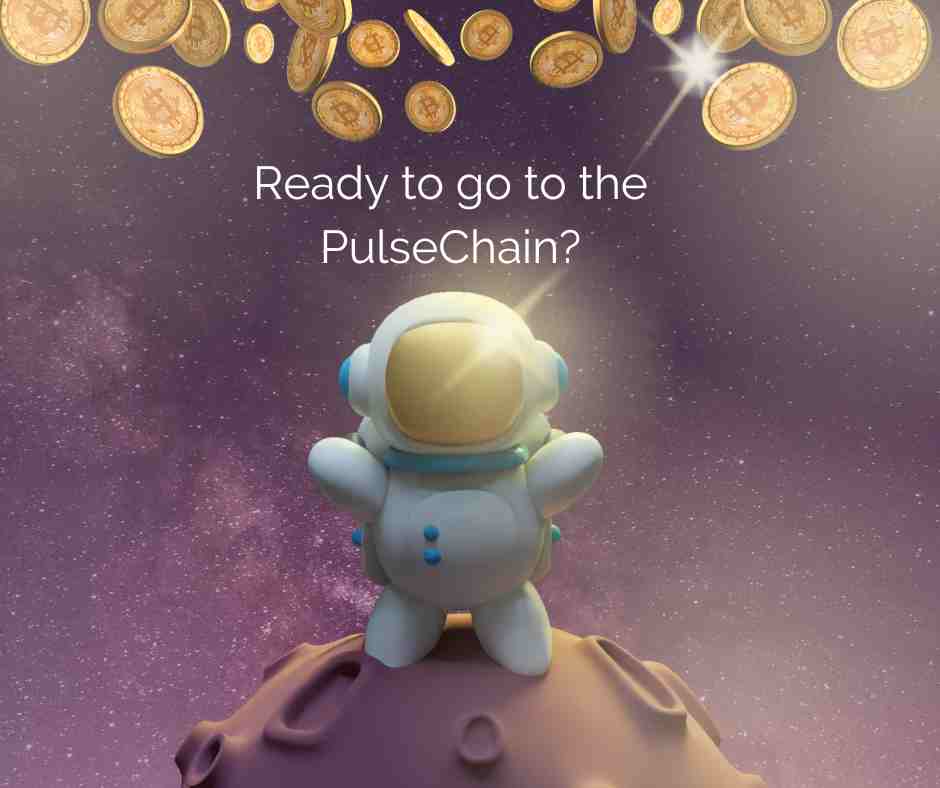Twitter trending hashtag for new blockchain project PulseChain, whose mainnet launch should be tracked. Crypto investing can often be an exercise in patience; however, in recent weeks, we have witnessed various forms of market speculation taking place. But market cycles can be treacherous, leaving cryptocurrency holders hoping for the next bull run.
PulseChain has gone viral.
Crypto inspectors have predicted its upsurge in popularity. Many individuals on Twitter have been asking what exactly is PulseChain.
What has made it trend globally besides its ability to handle 350,000+ daily transactions easily?
Visit Bretep on Twitter at: @Bretep to follow for updates: (#164338879804301312 )
So, let’s delve into this blockchain technology.

What is PulseChain?
PulseChain is a new blockchain network launched by Richard Heart – founder of the HEX project and is now active on GitLab.
The network aims to be a faster and cheaper alternative to Ethereum while still contributing to increasing its value by spreading out fees more evenly among members, while remaining compatible with smart contracts and decentralized apps on Ethereum.
PulseChain achieves this by acting as Ethereum’s hard fork and turning an image of its entire blockchain into a proof-of-stake blockchain.
The network also reduces transaction fees, making the technology more user-friendly and encouraging more transactions.
PulseChain Features That Differ From Ethereum
While Ethereum has recently made significant strides to address its current issues and shortcomings, PulseChain stands out by featuring several distinguishing characteristics that set the project apart from Ethereum—notably its ability to facilitate cryptocurrency-backed applications, low transaction fees, and user-centric focus.
Cheaper and Faster
Blockchain transactions are increasing astonishingly, with over 2.4 million daily transactions occurring daily.
PulseChain seeks to be 17% faster than Ethereum with 10-second blocks instead of 12, lowering fees and serving more users.
Energy Efficient
PulseChain is energy efficient by replacing Proof-of-Work miners with Proof-of-Stake validators, thus eliminating energy waste while reaching more users and remaining eco-friendly.
PulseChain Holders
The native token of PulseChain, $PLS, was initially designed as a deflationary asset. Over time, it will likely become listed on significant exchanges; further developments are still to come!
The $PLS inflation risk can be mitigated with a burn mechanism. Furthermore, validators will only earn fees, with 25% being burned off to lower circulating supply and reduce inflationary risk.
PulseChain was initially designed to allow holders of HEX coins to conduct transactions while bypassing Ethereum gas fees.
Token holders can contribute to the long-term growth of the project via The Sacrifice. You will first get access to your assets on Ethereum through a free airdrop, then participate in a unique mechanism known as “Sacrifice Period,” encouraging token holders to give up existing tokens they already possess as a sacrifice or burn them away, which will eventually be replaced with $PLS tokens when launched.
Sacrificing 1ETH will yield approximately 7000 PLS at launch.
More points can be earned if early and greater sacrifices are made.
Investors have the option of giving their stake to charity rather than PulseChain directly, should they wish.
Aubrey de Grey, Chief Science Officer for SENS Research Foundation, thanked Richard Heart and the PulseChain community for contributing millions to medical research.
“I want to thank Richard Heart; what he’s doing for us is spectacular! We have been having a very good year with income – a big expansion of our activities is coming. Thanks to the PulseChain Airdrop, those plans are going to explode into another level entirely. Our work will be greatly accelerated, resulting in huge numbers of lives saved in the future, as a direct result of Richard’s supporters’ wonderful generosity. We’re all working tirelessly to keep up with donors and hold up our part of the process. Thank you so very much Richard!”
PulseChain Mainnet Launch
As planned, preparations for PulseChain’s mainnet launch are well underway and should take place later this month.
Outside of Testnet V4, this chain also boasts an Explorer, Faucet, and Bridge to claim free testnet tokens; Bridge over assets from Ethereum Sepolia Testnet; and Exchange for trading your PRC20s.
Frequently Asked Questions (FAQs)
How Can I Purchase Pulsechain With Another Crypto?
In order to acquire Pulsechain through purchasing another cryptocurrency, first create a wallet compatible with Pulsechain before purchasing that first currency from which Pulsechain can be purchased on any platform you select. Most platforms also provide guides if you encounter difficulties when trying this out for yourself.
Can I buy PulseChain on Binance?
Where Did The Ethereum Go? (Pulsechain) Price(WHETH) Note: This coin is not listed on Binance as available for trade and service.
Is PulseChain a coin or token?
PulseChain will operate with its native “PLS” token. Users who wished to acquire PLS tokens took part in an “sacrifice phase”, during which they could donate any cryptocurrency or fiat currency to one or more supported addresses or charities in exchange for PLS tokens.
Conclusion
PulseChain will ultimately measure its success by its ability to revive decentralized applications (dApps) that are suffering due to Ethereum fees.









